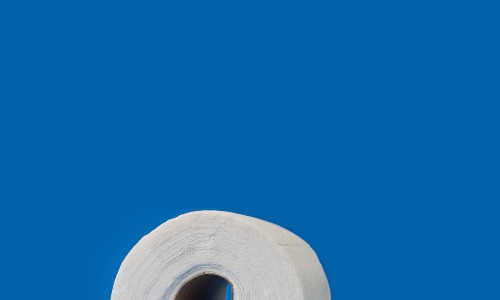
Do digital cables make a significant difference in sound quality? Well, many have tried a variety of different DA converters of various types, amateur consumer, intermediate user, pro sound, and top-end audiophiles have all tried out a variety of different converters, of all types, entry level consumer, pro sound, and have come across a single common factor in all of them that do not sound drastically different when fed with the same sources. That common factor seems to be digital cable’s abilities to “pick up” signals that happen to be near by. Let’s discuss this more and then move on to a review of our next cable.
The most common reason why digital cables tend to sound differently than conventional analog audio cable is that the latter uses a much higher number of RF impedance devices for the same bandwidth. This means that when you transmit from one source to another over the same wire, you run into a lot of noise that cancels out the higher frequencies that you transmit to the receiving device. This makes conventional analog audio cable prone to masking and clipping which cause audible distortion. However, with digital cables, because of the increased amount of RF impedance devices used for the same bandwidth, it causes them to be much more resistant to noise and therefore better able to transmit the signal without any problems.
In addition, digital cables usually have much more than one buffer/conductor of varying dielectric properties between them, meaning they can switch between two different types of dielectric materials without noticeable degradation in the characteristics of either one. Although, in theory, there should only be a slight variation in the performance of two cables of the same length and voltage rating, the reality is that the amount of dielectric loss caused by switching between the two is very small and therefore negligible. Digital audio cables are thus often characterized by very good bass response, excellent power handling capabilities and excellent clarity all while utilizing very little bandwidth at the same time.
Another thing that sets Digital Cables apart from other kinds of Audio-Conductors is the fact that the shield or covering is actually incorporated right into the conductor shield itself. This means that Digital Cables can be much less affected by electrostatic damage and this can make them very attractive for high tech applications where getting rid of static can be an issue. In addition, since the shield is incorporated right into the conductor shield, there’s no need for extra components like capacitors and connectors and that makes these types of Digital Cables very inexpensive. On the downside, shielding and insulation do not provide much shielding from RF noise.
Another major advantage of using digital cables over analog audio cables is that they have higher transfer rates and greater audio resolution than the latter. Transfer rates go up because digital cables have additional channels which allow them to support more transfer rates and improve their audio quality. Also, since digital signals carry much better data density than electrical signals, digital audio cables also have much better audio clarity. Transferable audio formats such as MP3 are still a factor when deciding on cables. However, some audiophiles may prefer analog over digital formats due to their perceived better audio quality.
Finally, Digital Cables is much lighter and more compact than their coaxial and metal cable counterparts. They’re also great for home entertainment since most households don’t have a lot of room for large and bulky power cords and cables. All in all, digital cables really are superior to regular audio cables. If you’re an audiophile, you’ll appreciate having better sound quality, less clutter and more convenience in your entertainment system.
-
 VANAUX 90 Diploma Optical Audio Cable Digital Toslink SPDIF Audio Cable for Dwelling Theater, Sound Bar, TV, Xbox, Ps – Black (3.3ft/1m)$11.99
VANAUX 90 Diploma Optical Audio Cable Digital Toslink SPDIF Audio Cable for Dwelling Theater, Sound Bar, TV, Xbox, Ps – Black (3.3ft/1m)$11.99 -
 Amazon Fundamentals USB 3.0 Extension Cable – A-Male to A-Feminine Adapter Twine- 9.8 Ft (3.0 Meters)$8.99
Amazon Fundamentals USB 3.0 Extension Cable – A-Male to A-Feminine Adapter Twine- 9.8 Ft (3.0 Meters)$8.99 -
 MEEFIX NFC Chip Wi-fi Charging Sign Antenna Pre-Put in Quantity Button Flex Cable Substitute for iPhone Xs$22.90
MEEFIX NFC Chip Wi-fi Charging Sign Antenna Pre-Put in Quantity Button Flex Cable Substitute for iPhone Xs$22.90 -
 Leadtrend Charger Cable Saver Protector – Comfortable Match for All Cell Telephones, Computer systems, and Chargers. Suitable with All Apple & Android Wires – Simple Use Defend Your Funding. ((Gray/Inexperienced)Product on sale$6.66
Leadtrend Charger Cable Saver Protector – Comfortable Match for All Cell Telephones, Computer systems, and Chargers. Suitable with All Apple & Android Wires – Simple Use Defend Your Funding. ((Gray/Inexperienced)Product on sale$6.66 -
 OP-84384 Communication Cable Conversion Connector for 9-pin SYSMAC$380.10
OP-84384 Communication Cable Conversion Connector for 9-pin SYSMAC$380.10 -
 Syncwire 3.5mm Aux Cable (10ft/3m) Hello-Fi Sound Nylon Braided Auxiliary Audio Cable Adapter Male to Male AUX Wire for Headphones, Automotive, Residence Stereos, Speaker, iPhone, iPad, iPod, Echo & Extra Black$14.99
Syncwire 3.5mm Aux Cable (10ft/3m) Hello-Fi Sound Nylon Braided Auxiliary Audio Cable Adapter Male to Male AUX Wire for Headphones, Automotive, Residence Stereos, Speaker, iPhone, iPad, iPod, Echo & Extra Black$14.99 -
 3ft Mini USB Cable, 2Pack USB Kind A Male to Mini B Charger Wire Quick Charging USB to USB Mini Cable Suitable with PS3 Controller, MP3 Participant, Digital Digital camera, Garmin GPS Receiver, Sprint Cam, Hero 3+$7.99
3ft Mini USB Cable, 2Pack USB Kind A Male to Mini B Charger Wire Quick Charging USB to USB Mini Cable Suitable with PS3 Controller, MP3 Participant, Digital Digital camera, Garmin GPS Receiver, Sprint Cam, Hero 3+$7.99 -
 Klein Instruments VDV812-612 Common Compression F Connectors RG6/6Q Coax, Common Sleeve Know-how, Skilled Grade, 50-PackProduct on sale$40.78
Klein Instruments VDV812-612 Common Compression F Connectors RG6/6Q Coax, Common Sleeve Know-how, Skilled Grade, 50-PackProduct on sale$40.78 -
 D-FLIFE Earspeaker Gentle Sensor Flex Cable Incl Mic Appropriate for iPhone Xs 5.8 with Device Package (for iPhone Xs)$15.99
D-FLIFE Earspeaker Gentle Sensor Flex Cable Incl Mic Appropriate for iPhone Xs 5.8 with Device Package (for iPhone Xs)$15.99







